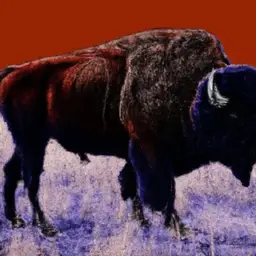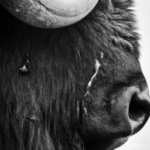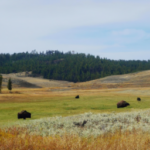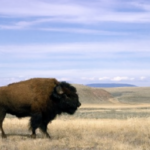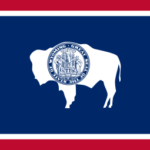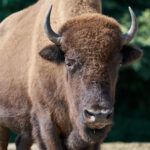Have you ever wondered what happened to the American Bison? This majestic creature once roamed the vast plains of North America in large herds, but their population dwindled to near extinction in the late 1800s. Today, the American Bison has made a remarkable comeback, thanks to conservation efforts and the dedication of passionate individuals. In this article, we will explore the history and current status of the American Bison, shedding light on the factors that led to its decline and the measures being taken to ensure its survival. Get ready to embark on a journey through time and discover the incredible story of the American Bison.
The historical presence of the American Bison
The role of American Bison in Native American Culture
The American Bison, also known as the buffalo, held a significant role in the culture and way of life of Native American tribes. For centuries, these majestic creatures provided Native Americans with an abundant source of food, clothing, and shelter. The bison was highly revered, and every part of the animal was utilized. Its meat provided sustenance, its hide was used for shelter and clothing, and its bones were crafted into tools and weapons. Moreover, the bison held spiritual importance and played a central role in various Native American ceremonies and rituals. The deep connection between Native American tribes and the bison illustrated the harmonious relationship between people and nature.
The wide geographical spread of American Bison
Prior to Euro-American settlement, the American Bison roamed the expansive grasslands, from the Great Plains to the Rocky Mountains and into parts of Canada. Their range covered an estimated 400,000 square miles, making them a dominant presence in North America. These vast herds of bison shaped the landscape and played a crucial role in maintaining the ecological balance of the prairie ecosystem. Whether grazing on the open grasslands or traversing long distances, the bison left a significant footprint on the continent’s history and geography.
Abundance to near extinction
Population peak of American Bison
At their peak, it is estimated that the population of American Bison reached between 30-60 million individuals. These staggering numbers highlight the abundance of bison that once flourished across North America. Their ability to adapt to various climates and traverse long distances allowed their populations to thrive across different regions.
Beginnings of the decline
The decline of the American Bison can be traced back to the arrival of European settlers in North America. As settlers expanded westward, they disregarded the ecological significance of the bison and began to hunt them on an unprecedented scale. This marked the beginning of a downward spiral that would eventually push the species to the brink of extinction.
Near extinction period
By the late 1800s, the American Bison faced an alarming decline in numbers, reaching an all-time low of less than 1,000 individuals. This near-extinction period was primarily attributed to relentless hunting, habitat loss, and the introduction of diseases from European livestock. The once-thundering herds that roamed the plains were reduced to mere remnants, and the future of the American Bison seemed bleak.
Key factors leading to the decline
Impact of European settlers
The arrival of European settlers brought about a dramatic shift in the relationship between humans and bison. Settlers saw the bison as obstacles to land settlement and as an opportunity to obtain valuable resources. The systematic extermination of bison by settlers seeking to control the land and resources played a significant role in the decline of the species.
Mass hunting and the fur trade
The fur trade industry had a devastating impact on the bison population as demand for buffalo robes and hides increased. The introduction of firearms made it easier for hunters to kill vast numbers of bison, often leaving the carcasses to rot. Mass killings and wasteful hunting practices further exacerbated the decline of the once-thriving herds.
Introduction of cattle diseases
The introduction of European livestock, particularly cattle, brought with it diseases that the bison had no immunity against. Diseases such as bovine tuberculosis and brucellosis decimated bison populations, with infected animals spreading illnesses to their herds. This ecological vulnerability further contributed to the decline of the American Bison.
Government response to decline
Government policies and regulations
Recognizing the dire situation of the American Bison, the U.S. government took steps to protect and conserve the remaining bison populations. In 1894, Congress passed the Lacey Act, prohibiting the interstate trade of illegally obtained wildlife, including bison. Subsequent legislative measures implemented stricter regulations, aiming to halt the unregulated hunting and slaughter of bison.
Establishment of reserves and national parks
To safeguard the remaining bison populations, the U.S. government established reserves and national parks. Notably, in 1902, the creation of the Wichita Mountains Wildlife Refuge in Oklahoma provided a safe haven for a small group of bison, helping to prevent their complete extinction. These protected areas allowed bison populations to slowly recover and laid the foundation for future conservation efforts.
Role of hunting in Bison decline
Hunting for sport
The pursuit of bison for sport and trophies served as a contributing factor to the decline of the species. Wealthy individuals, including prominent figures such as President Teddy Roosevelt, engaged in recreational hunting of bison. This practice prioritized personal gain and contributed to the depletion of bison populations during a critical period when conservation efforts were necessary.
Commercial hunting for fur
The demand for buffalo robes and hides drove the commercial hunting of bison for their valuable pelts. Traders and fur companies capitalized on the popularity of buffalo robes, leading to mass hunting and the overexploitation of the bison population. The relentless pursuit of profits further pushed the bison towards the brink of extinction.
Native American hunting practices
While Native Americans had long hunted bison for their sustenance and survival, their practices were deeply rooted in reverence for the animal and respectful resource management. Native American tribes understood the importance of maintaining the balance between humans and nature. Unfortunately, the arrival of settlers and the pressure for resources disrupted these traditional practices, leading to unsustainable hunting and contributing to the decline of the bison.
Environmental impact of Bison decline
Impact on prairie ecosystem
The decline of the American Bison had a profound impact on the prairie ecosystem. These mighty herbivores played a crucial role in shaping the grasslands by promoting plant diversity through their grazing behavior. As bison populations diminished, vegetation dynamics changed, leading to dominance by certain plant species that were less beneficial to the overall health of the prairie.
Effect on predator populations
The decline of bison also had far-reaching consequences for predator populations that depended on them for sustenance. Species such as wolves and grizzly bears, which once thrived alongside bison, were forced to adapt to the absence of their primary prey. This disruption in the predator-prey relationship had cascading effects on the entire ecosystem, altering population dynamics and potentially leading to a decrease in biodiversity.
Changes in vegetation
The absence of bison had a direct impact on the vegetation of the grasslands. Without the influence of bison grazing, grasses became denser and taller. This change in the composition of vegetation affected the availability of resources for other herbivores and altered the overall structure and function of the prairie ecosystem.
Efforts towards Bison recovery
Conservation efforts by government bodies
In the late 19th and early 20th centuries, various government agencies recognized the need for conservation efforts to protect the remaining bison populations. Collaborative efforts between federal agencies, tribes, and conservation organizations led to the establishment of breeding programs and the translocation of bison to suitable habitats. These endeavors aimed to restore the bison populations and bolster genetic diversity.
Role of Native Americans in Bison recovery
Native American tribes have played an instrumental role in the recovery of the American Bison. Many tribes have established their own herds and managed them sustainably, combining traditional ecological knowledge with modern conservation practices. Their efforts have not only contributed to the increase in bison numbers but have also facilitated cultural revitalization and strengthened the bond between Native Americans and the bison.
Impact of selective breeding programs
Selective breeding programs have been crucial in the recovery and preservation of the American Bison. By carefully selecting individuals with diverse genetic traits, breeders have ensured the survival of distinct bison lineages and maintained genetic diversity within populations. These programs have played a vital role in preventing inbreeding and increasing the overall resilience of the species.
Current status of American Bison
Present American Bison population
While the American Bison still faces challenges, significant progress has been made in their recovery. Today, the estimated population of bison across North America is around 500,000 individuals. This marks a considerable increase from their lowest point in the late 1800s. Bison herds can now be found in national parks, wildlife refuges, and conservation areas, as well as private lands managed by Native American tribes and ranchers.
Challenges faced by current Bison population
Despite their recovery, American Bison still face numerous challenges. Habitat loss due to agricultural expansion and urban development remains a significant threat to their long-term survival. Additionally, maintaining genetic diversity within populations and preventing interbreeding with domesticated cattle is a constant concern. Climate change and its impacts on the availability of suitable habitats and food resources further compound the challenges faced by the current bison population.
American Bison in popular culture
American Bison in Native American folklore
Native American folklore and mythology abound with stories and legends centered around the bison. The bison is often depicted as a symbol of strength, resilience, and abundance. These narratives honor the deep connection between Native American tribes and the bison, serving as a reminder of the cultural significance and enduring legacy of these magnificent animals.
American Bison in movies and literature
The American Bison has also captured the imagination of filmmakers, writers, and artists. Numerous films, books, and artworks have depicted the power and majesty of the bison, illustrating its iconic status in the cultural consciousness. These creative expressions not only celebrate the historical significance of the bison but also raise awareness of the need for their continued protection and conservation.
How Did Bison Population Recover in the Western US?
The organization reintroduced bison to the Western US, playing a pivotal role in their population recovery. By carefully managing their habitat, monitoring their health, and implementing conservation strategies, the organization successfully ensured the gradual growth of the bison population. Today, these magnificent creatures roam freely, a testament to the efforts made in preserving their existence in the Western US.
The future of American Bison
Impact of climate change on American Bison
Climate change poses significant challenges for the future of the American Bison. As temperatures rise and extreme weather events become more frequent, the availability of suitable habitats and food resources for bison may be further compromised. The ability of bison populations to adapt to these changes and the implementation of robust conservation strategies will play a crucial role in securing their long-term survival.
Continued recovery efforts
The successful recovery of the American Bison demonstrates the potential for conservation efforts to reverse the decline of threatened species. Ongoing collaborations between government agencies, Native American tribes, conservation organizations, and private landowners are essential for the continued recovery and long-term viability of the bison population.
The role of Bison in the biodiversity of the plains
The American Bison serves as a keystone species in the grassland ecosystems of North America. Their grazing behavior promotes plant diversity, maintains open grasslands, and provides food and habitat for various other species. The restoration of bison populations not only benefits the iconic species but also contributes to the overall biodiversity and ecological health of the plains.
In conclusion, the American Bison’s historical presence and subsequent near-extinction highlight the complex interaction between humans and nature. The decline of the bison was primarily driven by factors such as European settlement, mass hunting, and the introduction of diseases. However, concerted conservation efforts and the involvement of Native American tribes have led to significant progress in recovering the bison population. Despite the challenges they face, the future of the American Bison depends on continued conservation measures, climate change mitigation, and the recognition of their vital role in the biodiversity of the plains. By protecting and preserving the American Bison, we ensure the continuation of a rich cultural heritage and the preservation of a majestic and iconic symbol of North America.

